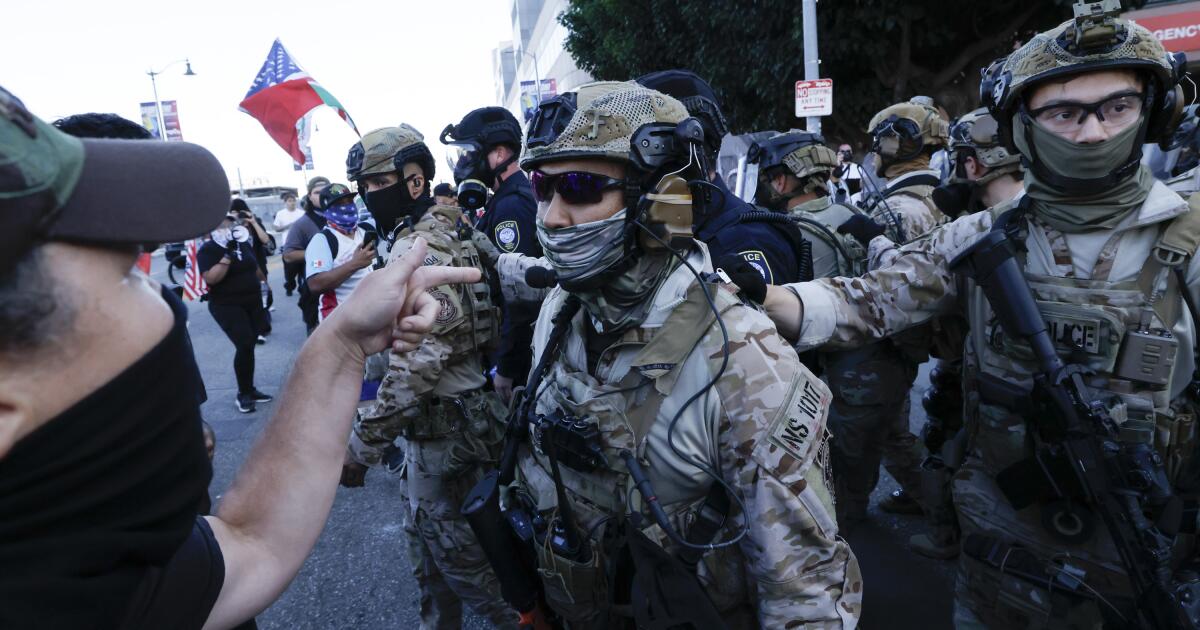L.A. County to create fund for immigrants affected by ICE raids
A cash fund for families financially reeling from ongoing federal immigration raids will be up and running within a month, according to Los Angeles County officials.
The Board of Supervisors voted 4-0 Tuesday to create the fund, fueled by philanthropy, focused on workers and their families in small L.A. County cities and unincorporated areas.
Details on the fund were sparse. It was not clear who will be eligible or how much a family could expect to collect.
For almost two months, the Trump administration’s sweeping raids have petrified residents across the region, with immigration agents snatching people from swap meets, car washes, Home Depot stores and street corners. Church pews, hospitals and whole neighborhoods have been emptier than usual. Many say they’re scared to go to work, as they weigh the necessity of collecting a paycheck against the risk that they might be arrested and deported.
“We are sending a clear message: Los Angeles County stands with our immigrant communities, and we will continue to fight to ensure that every resident, regardless of immigration status, has the dignity and support they need to survive and thrive,” said Supervisor Hilda Solis, who spearheaded the fund, in a statement.
The county also wants to expand a fund for small businesses who are affected financially by the raids, according to the motion approved by the supervisors.
Supervisor Kathryn Barger was absent from the vote, which comes on the heels of L.A. Mayor Karen Bass’ announcement last week that the city will provide cash to people affected by the sweeping immigration raids. Bass said the aid, also funded by philanthropy, will be distributed using cash cards with a “couple hundred” dollars on them.
The federal agents conducting the immigration raids are often in plainclothes, with their faces shielded by sunglasses and masks. Supervisor Janice Hahn said Tuesday that she plans to introduce an ordinance barring law enforcement from concealing their identities in unincorporated areas, where the county government is the local authority.
“Law enforcement officers should never wear personal disguises or conceal their identities while interacting with the public in the course of their duties,” said Hahn.
The county is also considering a program to safeguard belongings left behind in unincorporated areas by people detained by ICE agents, as well as starting a hotline for deported workers to retrieve unpaid wages.
Rampant immigration sweeps have left a trail of belongings — cars, lawn mowers, ice cream carts — across the region with no clear way to reunite the items with their owners.
“Most people don’t know how to get their last paycheck when they are deported, how to reconcile with their equipment or anything that relates to the life that they held here,” said Rosa Soto, head of the LA General Medical Center Foundation, at the meeting. “It is imperative we have the support they need.
